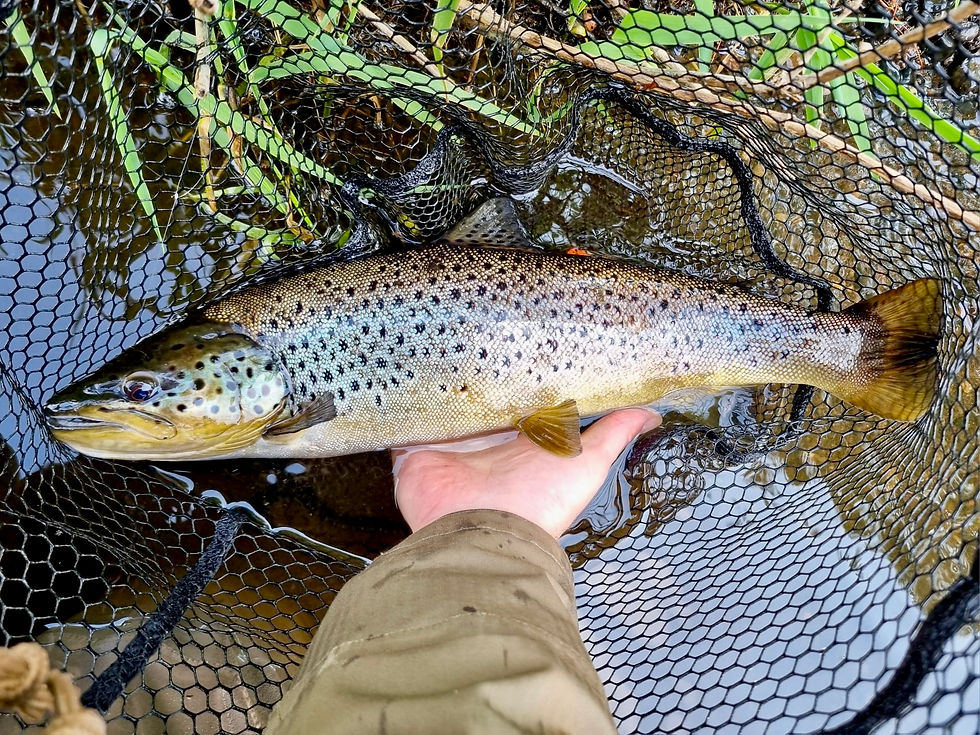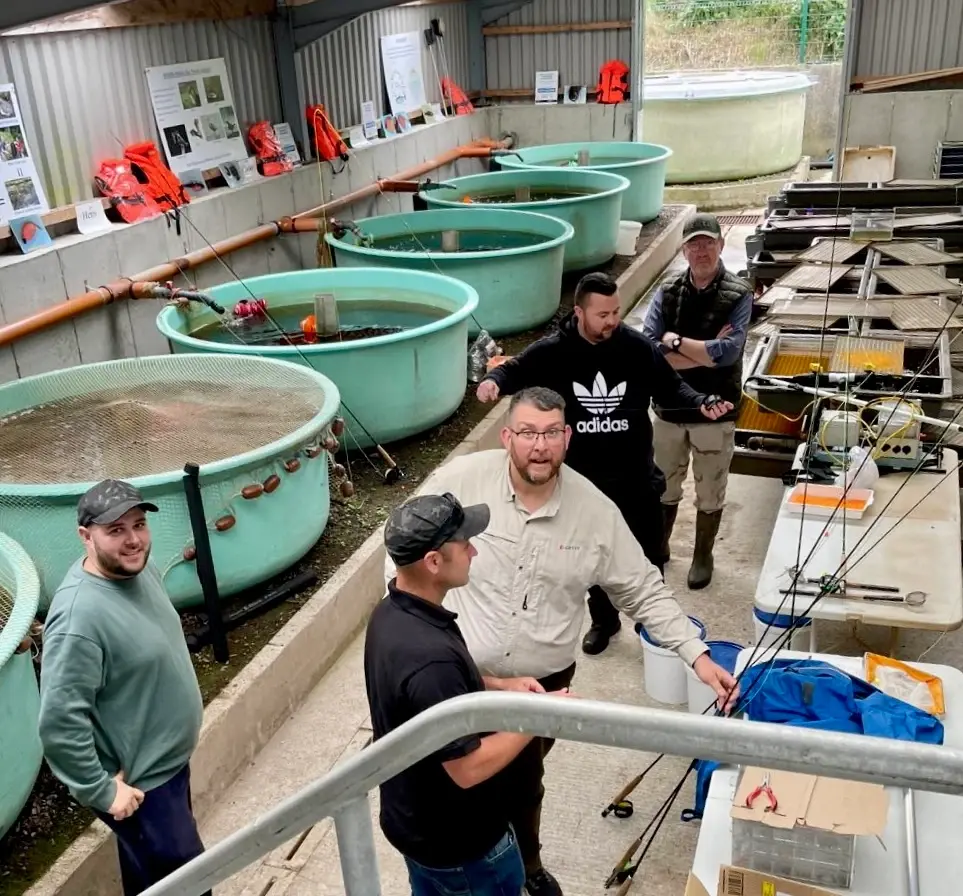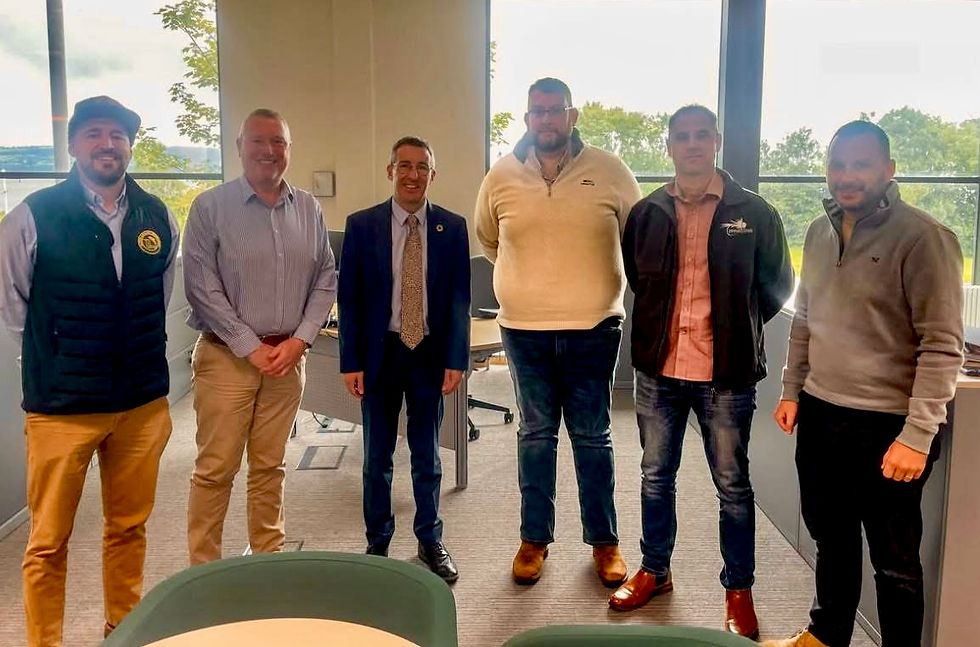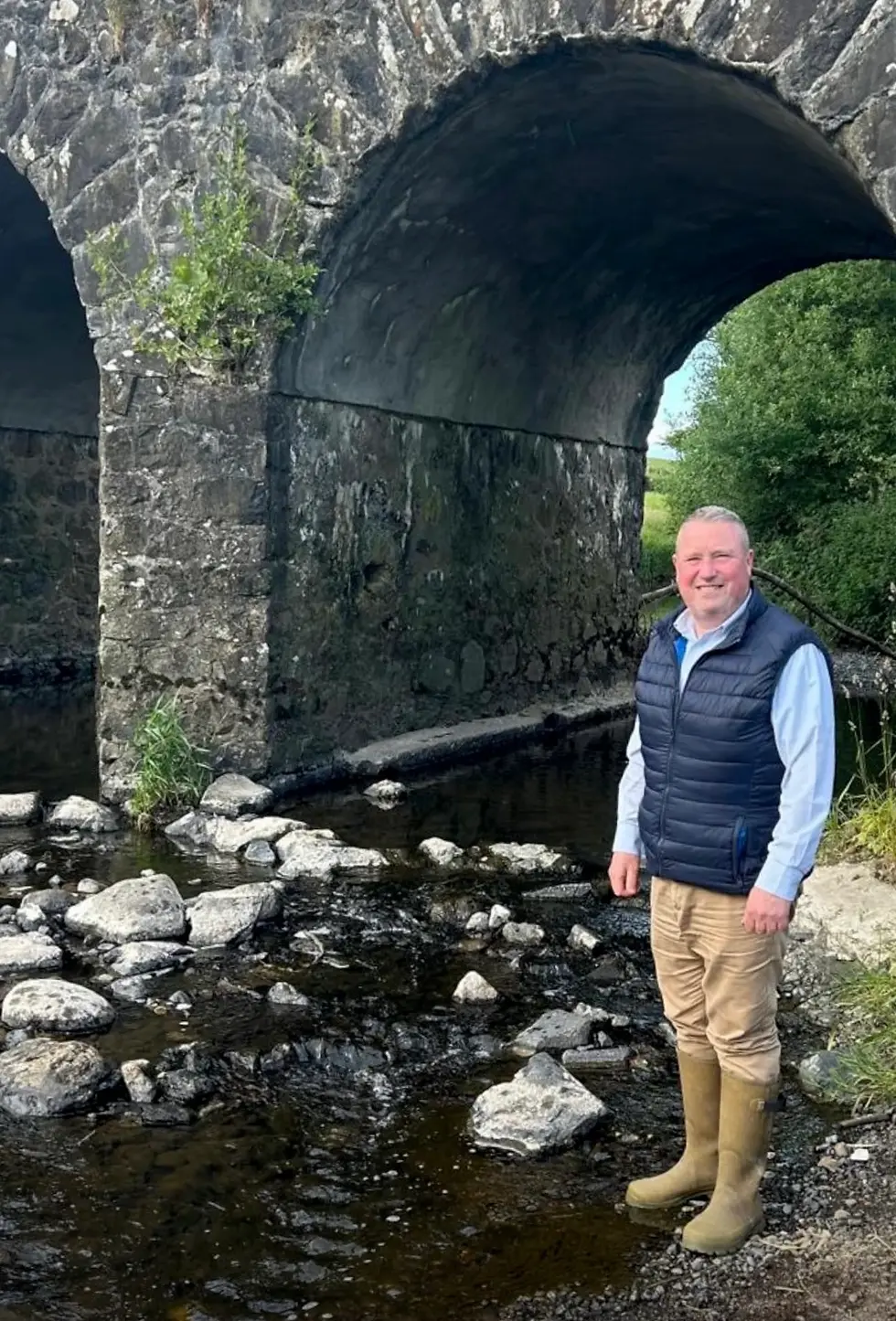Kells Angling Club gains cross-party backing in high-stakes hatchery campaign
- Love Ballymena

- Aug 17
- 5 min read

The declining Dollaghan Trout
(All images: Kells, Connor & Glenwherry Angling Club)
A County Antrim angling club has secured backing from MPs, MLAs and fellow fishing groups in its campaign to re-establish a salmon and Dollaghan trout hatchery on the Kellswater River. A crucial DAERA decision is expected on 26 August.
A rural angling club in County Antrim has found itself at the centre of a growing campaign to save one of Northern Ireland’s most iconic fish species.
On 29 July 2025, Kells, Connor & Glenwherry Angling Club, supported by the Ulster Angling Federation (UAF), formally submitted three Section 14 applications under the Fisheries Act (Northern Ireland) 1966 to DAERA Minister Andrew Muir.
The applications seek approval to re-establish a hatchery on the Kellswater River, designed to protect the declining Dollaghan trout and salmon populations.
Kells, Connor and Glenwherry Angling Club previously ran a successful hatchery operation for 24 years, but was forced to cease operations in 2019 when DAERA refused to issue Section 14 permits, which the hatchery needs to operate legally.
As part of the hatchery operation, the club welcomed schools and groups to the hatchery to learn about the life cycle of trout, pollution, and wildlife, which relies on the river to survive. Unfortunately, this education project was forced to stop when the hatchery operation ceased.
What the applications cover

The local hatchery in Kells seeking legal permission to operate.
The club’s proposals, lodged via the Ulster Angling Federation, include:
A Salmon hatchery project
A Dollaghan supportive breeding programme
A Dollaghan schools project, engaging young people in fish conservation
If approved, the permits would allow the club to carry out otherwise restricted activities such as broodstock capture and artificial propagation.
Explainer: What is a Section 14 Permit?
Under the Fisheries Act (Northern Ireland) 1966, a Section 14 permit gives special authorisation for activities that are normally prohibited in inland waters.
These can include:
Capturing salmon or trout by electric fishing for supportive breeding
Artificial propagation of fish stocks
Transferring fish between inland fisheries
A permit may be granted when:
The purpose aligns with scientific advice and good fisheries management
The applicant is judged competent to undertake the work
The project aims at fishery improvement or conservation
Without such permits, clubs cannot legally run hatcheries — even if the goal is to protect endangered species like the Dollaghan trout.
Timeline: How the hatchery battle unfolded
1995–2019 – Kells, Connor & Glenwherry Angling Club founded and operated a hatchery which not only benefited the river and fish stock, but also served as an educational hub for local schoolchildren who would visit and learn of the importance of taking care of the local rivers.
2019 – DAERA refused to issue Section 14 permits to the local club.
2019–2023 – Club records and AFBI data show a steep decline in fry counts in the Kellswater, raising alarm about Dollaghan stocks.
August 2024 – DAERA refuses the club’s proposal to reactivate its mothballed hatchery on the Kellswater River. The club expressed “serious disappointment” citing AFBI data and successful comparator schemes in Scotland and Wales (Love Ballymena report).
September 2024 – North Antrim MP Jim Allister visits the hatchery and describes DAERA’s refusal as “petulance at its worst”, accusing officials of being “disinterested” (Love Ballymena report).
29 July 2025 – Kells, Connor & Glenwherry Angling Club formally submits three Section 14 applications, supported by the UAF.
29 July 2025 – Meeting held with DAERA Minister Andrew Muir and Inland Fisheries officials, arranged by Timothy Gaston MLA, attended by club chairman Phil Mailey, UAF representatives and River Enhancement Officer Gareth Cooper.
July–August 2025 – Club secures “overwhelming support” from three MPs, eight MLAs, 12 angling clubs, fishery rightsholders, trusts, and partnerships.
26 August 2025 – DAERA is expected to issue its decision on the applications.
A river under pressure

(L-R) David Thompson, Ulster Angling Federation, Phil Mailey, Chairman Kells Club, DAERA Minister Andrew Muir, Gareth Cooper, River Enhancement Officer, Michael Currie, director Ulster Angling Federation and Timothy Gaston MLA.
In July, during the meeting with the Minister, the club raised a series of pressing challenges, including:
Increased commercial netting on Lough Neagh
Pollution and poor water quality
Reduced food sources
Predation by cormorants
Barriers to fish passage
Sharp decline in Dollaghan fry since 2019
Club chairman Phil Mailey said the data made a compelling case for intervention:
“Hopefully the Department will study the catch returns and fry count data supplied by the club and AFBI which shows a sharp decline from 2019 and grant us the permits required to continue the project of protecting our rapidly declining Dollaghan stocks in our river.”
Explainer: Why the Dollaghan Trout matters

Phil Mailey, Chariman of Kells, Connor and Glenwherry Angling Club, on the Kellswater River
The Dollaghan trout is a unique strain of brown trout found only in Lough Neagh and its tributaries, including the Kellswater River.
Known as “Ireland’s brown trout on steroids”, Dollaghan can grow to impressive sizes during their time in the lough.
They migrate into rivers to spawn, but numbers have collapsed in recent years.
Club fry counts, supported by AFBI data, show a sharp decline since 2019.
Key threats include:
Commercial netting on Lough Neagh
Pollution and deteriorating water quality
Reduced food supply
Predation by cormorants
Barriers to spawning grounds
For many local anglers, the Dollaghan is more than just a fish — it’s part of cultural heritage.
Political and community backing
The hatchery push has cut across party lines, with representatives from both Westminster and Stormont lending their support. Local angling clubs, trusts and landowners have also rallied behind the campaign.
The Ulster Angling Federation argues that hatcheries are not a silver bullet, but they can act as a vital safeguard against the risk of local extinctions while longer-term measures such as habitat restoration, pollution control, and improved river management take effect.
Political reactions
In August 2024, DAERA’s refusal to even consider reopening the Kells hatchery was met with “serious disappointment” by the club.
By September 2024, Jim Allister MP blasted the department’s decision as “petulance at its worst”, offering full backing to the anglers.
This political support, combined with cross-party MLA involvement, has placed DAERA under mounting pressure ahead of its August decision.
Decision imminent
All letters of support have been submitted alongside the applications. The club, its political allies, and partner organisations are now waiting for DAERA’s ruling on 26 August 2025.
For the anglers of Kells, Connor & Glenwherry, the outcome may decide whether the Dollaghan — sometimes described as “Ireland’s brown trout on steroids” — has a future in their waters.
As the club put it in its latest statement: “Your support means the world to us.”








